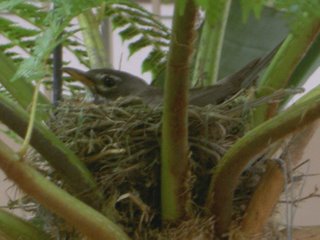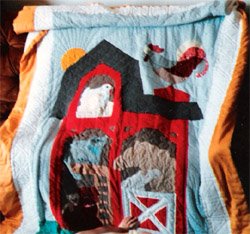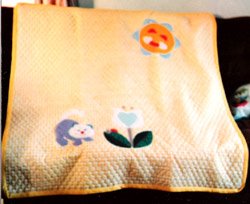Fabric Postcard Photo Quilts
You may have seen or heard about postcard quilts. Quilters around the world are creating fabric postcards and sending them to their friends in the mail. Imagine how pleased you would be to receive one of these little handmade treasures from one of your quilting friends.
As with so many things quilted, everyone has a somewhat different idea of a postcard quilt. One form of traditional postcard quilt is a full-size quilt made up of 4” by 6” rectangles (postcard size patches) sewn in rows, and offset, like you would build a wall.
A different, yet still traditional form, is where the postcard shaped block is set like a block surrounded by sashing. This, too, is generally a full size quilt, and may have a central theme – travel, baby, college, etc.
Also popular are landscape postcard quilts, or small appliqué pieces that might be a replica of a picture postcard – a scene in a town, lighthouse, bouquet of flowers, etc. This style quilt might range in size from postcard size – 4” by 6” up to 12” by 18” or more.
Ideas for designs and sizes vary. Some quilters create a foundation by painting or dying fabric and then use quilting stitches, buttons or other notions to embellish their design. Others meticulously appliqué a scene that looks exactly like a picture postcard or creative design. In some cases, quilters create photo quilts by transferring a favorite photograph onto fabric and adding a border to complete the design.
It’s both easy and fun to make these little treasures, and then send them through the mail to your family and friends. Using just a home computer, scanner and printer, you can transfer a favorite photograph onto fabric, add a border and backing, finish the edges, and send it through the mail. You can include a personal greeting printed or hand written on the address side of the quilt postcard.
The US Post Office has size regulations for your finished fabric postcard to qualify for the postcard rate, or you can pay the full first class rate (39 cents) to mail your little quilt. A quick trip to your post office and a visit to the postal worker will help you decide how is best to mail your card.
While adding buttons, rickrack, netting, and other embellishments makes the quilt card fun, these may survive better inside an envelope. Although they may not have as much of an impact as seeing a fabric card stacked in your mail, opening an envelope to find a quilt postcard must be just as fun.
It’s not too late to start making these for your holiday greetings. Each one takes very little time, and if you make several at once, your efficiency will increase.
You can get more information about making postcard quilts at:
www.Fabric-Postcards.com
Happy Quilting!
Penny Halgren
www.How-to-Quilt.com
Inspiration and Education for Beginning Quilters
www.Rag-Quilt-Instructions.com
Fast, Fun and Funky Quilts
www.Fabric-Postcards.com
Quilt Greetings Across the Miles
As with so many things quilted, everyone has a somewhat different idea of a postcard quilt. One form of traditional postcard quilt is a full-size quilt made up of 4” by 6” rectangles (postcard size patches) sewn in rows, and offset, like you would build a wall.
A different, yet still traditional form, is where the postcard shaped block is set like a block surrounded by sashing. This, too, is generally a full size quilt, and may have a central theme – travel, baby, college, etc.
Also popular are landscape postcard quilts, or small appliqué pieces that might be a replica of a picture postcard – a scene in a town, lighthouse, bouquet of flowers, etc. This style quilt might range in size from postcard size – 4” by 6” up to 12” by 18” or more.
Ideas for designs and sizes vary. Some quilters create a foundation by painting or dying fabric and then use quilting stitches, buttons or other notions to embellish their design. Others meticulously appliqué a scene that looks exactly like a picture postcard or creative design. In some cases, quilters create photo quilts by transferring a favorite photograph onto fabric and adding a border to complete the design.
It’s both easy and fun to make these little treasures, and then send them through the mail to your family and friends. Using just a home computer, scanner and printer, you can transfer a favorite photograph onto fabric, add a border and backing, finish the edges, and send it through the mail. You can include a personal greeting printed or hand written on the address side of the quilt postcard.
The US Post Office has size regulations for your finished fabric postcard to qualify for the postcard rate, or you can pay the full first class rate (39 cents) to mail your little quilt. A quick trip to your post office and a visit to the postal worker will help you decide how is best to mail your card.
While adding buttons, rickrack, netting, and other embellishments makes the quilt card fun, these may survive better inside an envelope. Although they may not have as much of an impact as seeing a fabric card stacked in your mail, opening an envelope to find a quilt postcard must be just as fun.
It’s not too late to start making these for your holiday greetings. Each one takes very little time, and if you make several at once, your efficiency will increase.
You can get more information about making postcard quilts at:
www.Fabric-Postcards.com
Happy Quilting!
Penny Halgren
www.How-to-Quilt.com
Inspiration and Education for Beginning Quilters
www.Rag-Quilt-Instructions.com
Fast, Fun and Funky Quilts
www.Fabric-Postcards.com
Quilt Greetings Across the Miles




